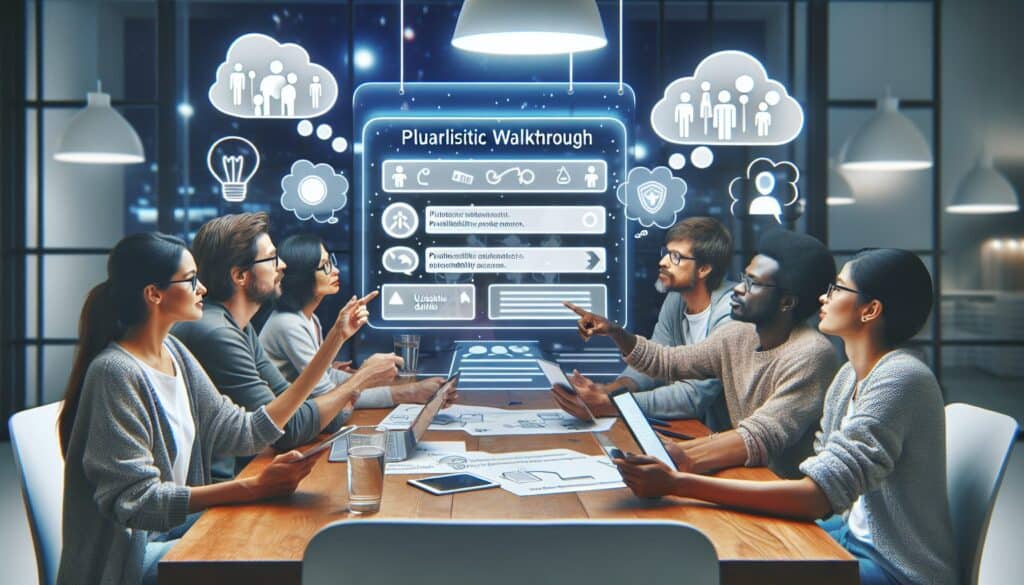一种可用性检查方法,由一组用户、开发人员和可用性专家共同完成一个任务场景,并在每一步讨论可用性问题。
- 方法: 工程, 质量
多元演练

多元演练
- 设计评估, 设计思维, Human-Centered Design, 交互设计, 可用性, 用户体验(UX), 用户界面(UI), 用户测试, 以使用者為中心的設計
目标
如何使用
- 小组成员一起工作,从不同角度找出潜在问题,模拟用户体验,并对设计元素和流程提出意见。
优点
- 为评估带来不同的视角;可以发现更广泛的可用性问题;促进对设计变更的共同理解和认同。
缺点
- 组织和实施起来可能比较费时;需要有一个熟练的主持人来管理小组动态,并保持会议的集中性;如果不加以控制,小组思维可能是一个潜在的问题。
类别
- 产品设计, 质量
最适合:
- 让一组用户、开发人员和可用性专家共同完成任务场景,评估系统的可用性。
In the realm of product design and development, the Pluralistic Walkthrough is particularly beneficial during the early phases of a project, such as conceptualization and initial design, where user involvement is pivotal for ensuring usability. This methodology is frequently adopted in various sectors including software design, web application development, and consumer electronics, where user interface and interaction are paramount. During these collaborative sessions, participants typically include end-users who represent different demographics, designers, developers, and usability specialists, who collectively contribute their thoughts as they step through task scenarios, mimicking the user’s experience with the system. The involvement of diverse stakeholders not only enriches the evaluation with multifaceted feedback but also turbocharges team cohesion and understanding of user needs. For instance, in a project aimed at creating an educational app, educators, students, and designers might engage in a Pluralistic Walkthrough to identify pain points from all angles, such as navigation difficulties or content accessibility. This approach enables teams to capture a broader range of usability concerns and promotes a shared commitment to the design revisions, laying a foundation for 以用户为中心 iterations that can ultimately lead to more effective and engaging products. Additionally, employing this methodology can yield data that is invaluable for subsequent stages of a project, such as development or closer usability testing, ensuring a smoother transition from design to implementation.
该方法的关键步骤
- Define task scenarios relevant to the system being evaluated.
- Participants individually review the scenarios to note potential usability issues.
- Conduct a group discussion where each participant shares their observations.
- Simulate the user experience step-by-step for each task scenario.
- Encourage diverse viewpoints to examine design elements and workflows.
- Identify and document usability problems as a collective.
- Discuss possible design solutions or modifications based on the findings.
专业提示
- Encourage participants to articulate their assumptions and expectations during the walkthrough to uncover unspoken 偏见 and preconceptions.
- Utilize a clear and structured scenario framework to guide discussions, ensuring all aspects of the user experience are systematically evaluated.
- Record the insights and feedback in real-time, categorizing them by severity and frequency to prioritize design changes effectively.
历史背景
1986
(如果日期不详或不相关,例如 "流体力学",则对其显著出现的时间作了四舍五入的估计)。

相关文章
制造运营管理(MOM)
制造执行系统(MES)
生产控制计划
人工测试
手动搬运评估表 (MAC)
手动任务风险评估工具(ManTRA)